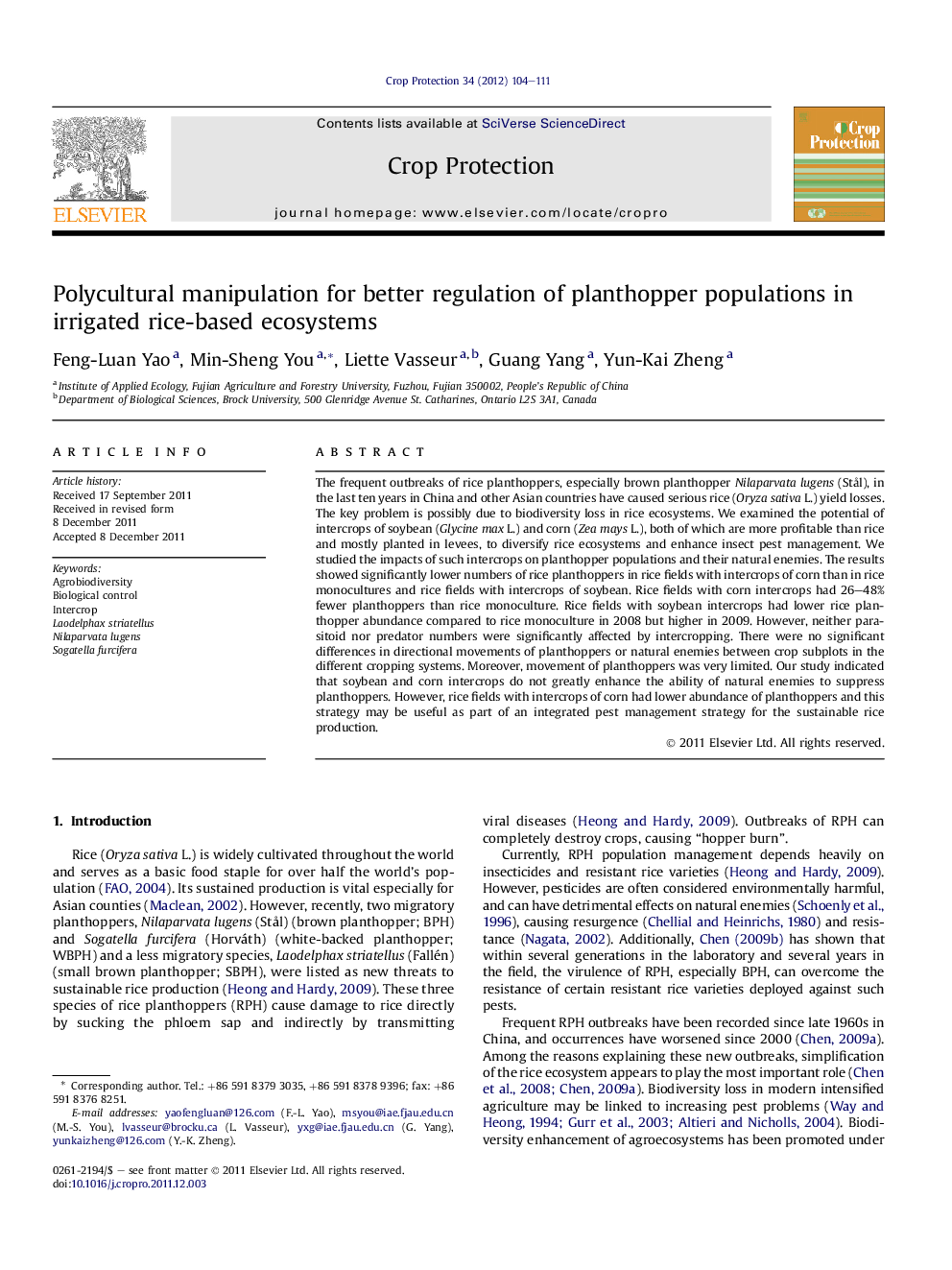| کد مقاله | کد نشریه | سال انتشار | مقاله انگلیسی | نسخه تمام متن |
|---|---|---|---|---|
| 4506408 | 1624353 | 2012 | 8 صفحه PDF | دانلود رایگان |

The frequent outbreaks of rice planthoppers, especially brown planthopper Nilaparvata lugens (Stål), in the last ten years in China and other Asian countries have caused serious rice (Oryza sativa L.) yield losses. The key problem is possibly due to biodiversity loss in rice ecosystems. We examined the potential of intercrops of soybean (Glycine max L.) and corn (Zea mays L.), both of which are more profitable than rice and mostly planted in levees, to diversify rice ecosystems and enhance insect pest management. We studied the impacts of such intercrops on planthopper populations and their natural enemies. The results showed significantly lower numbers of rice planthoppers in rice fields with intercrops of corn than in rice monocultures and rice fields with intercrops of soybean. Rice fields with corn intercrops had 26–48% fewer planthoppers than rice monoculture. Rice fields with soybean intercrops had lower rice planthopper abundance compared to rice monoculture in 2008 but higher in 2009. However, neither parasitoid nor predator numbers were significantly affected by intercropping. There were no significant differences in directional movements of planthoppers or natural enemies between crop subplots in the different cropping systems. Moreover, movement of planthoppers was very limited. Our study indicated that soybean and corn intercrops do not greatly enhance the ability of natural enemies to suppress planthoppers. However, rice fields with intercrops of corn had lower abundance of planthoppers and this strategy may be useful as part of an integrated pest management strategy for the sustainable rice production.
Figure optionsDownload as PowerPoint slideHighlights
► Soybean and corn were used as intercrops to control rice planthopper populations.
► Rice fields with corn intercrops had 26–47% lower numbers of planthoppers.
► Neither parasitoid nor predator numbers were affected by intercropping.
► The movement of planthoppers and their natural enemies were unaffected in diculture.
► Corn may be used as an intercrop to regulate rice planthopper populations.
Journal: Crop Protection - Volume 34, April 2012, Pages 104–111